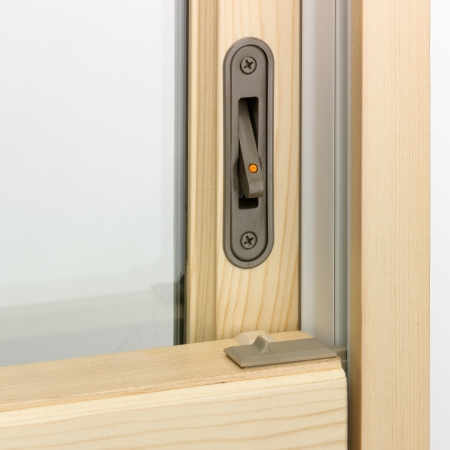Connecting the Dots
Understanding window safety and codes and standards for child protection
When a five-year-old boy died after falling from a second-story window in a townhouse in Everett, Washington, last summer, local safety officials noted there had been a spike in child window falls. South County Fire officials in Snohomish County noted that as of Sept. 1, 2024, 19 children had fallen from windows at that point in 2024—more than double a typical year of eight falls and above their prior record of 12 falls in 2021. In response to the spike in window falls, South County Fire stepped up their communications efforts to spread the word about the potential hazards. Through their partnership with the Safe Kids Coalition, South County Fire added window locks to a list of child safety devices that can be provided at no cost to families in Snohomish County.

“These are heartbreaking incidents that can happen to any family,” says Shawneri Guzman, community outreach manager for South County Fire and coordinator with Safe Kids Snohomish County. “We want to equip parents with information that can prevent this from happening to another child.”
Unfortunately, concerns about the role windows can play in fire safety have been missing from the safety messaging. It is that concern about balancing fire safety with child window fall safety that led to the development of American Society for Testing and Materials standards for window opening control devices, or WOCDs, that limit window openings to 4 inches while providing for full window opening when necessary for emergency escape or rescue.
The inclusion of WOCDs in building codes in the United States and Canada have been heralded to provide a way to help parents and caregivers manage child window safety while still meeting code requirements for emergency escape and rescue openings. At the time that the International Code Council voted to include WOCDs as an exception to minimum window sill height provisions, David Collins of the Preview Group and a representative of the American Institute of Architects, testified that WOCDs provide “an elegant solution” to help improve safety in the codes.
The Snohomish County safety officials are not alone in their recommendations for window locks; many safety advocacy groups, including the U.S. Consumer Products Safety Commission, list window guards and window stops or locks in their lists of safety tips. While well-intentioned, the increased focus on vent limiters that do not meet the ASTM standards and the building code provisions as a safety means led to the development of the technical bulletin from the Window and Door Manufacturers Association and Fenestration and Glazing Industry Alliance addressing industry concerns about the use of vent limiters in windows required to meet code requirements for emergency escape and rescue. Published last year, AAMA/WDMA TB-24-01 includes the following note:
“Caution should be taken before using vent stops or night latches on any window designated or intended for emergency escape and rescue. Vent stops and night latches which cannot be released, and which restrict the sash from being fully opened should not be used on windows designated or intended for emergency escape and rescue.”
Additionally, most window stops do not automatically reset to the default condition required by ASTM F2090 to limit the window from opening to 4 inches.
The disconnect between advice from safety advocates and the building code requirements has created confusion in the marketplace. While the International Codes, typically adopted by U.S. states, contain provisions for the use of WOCDs in emergency escape and rescue opening windows, the codes do not contain caution against using other types of window hardware to restrict the window opening. It’s not just about resetting after use; ASTM F2090 contains many performance requirements for WOCDs, including operation, labeling, load testing and cycle testing. These provisions are included in the standard to establish a durability baseline and help ensure that WOCDs will perform as intended in the case of emergency.
The industry members should work together to identify whether the codes and standards for WOCDs and the emergency escape and rescue opening provisions need to be updated to address the concerns about the balance between child fall safety and fire safety. In the meantime, we must continue to work with the National Safety Council’s Window Safety Task Force, the Consumer Product Safety Commission and other child safety groups to improve their messaging. The use of WOCDs can be an effective solution to meeting the code requirements for window fall and fire safety. Providing clear provisions in the building codes to differentiate WOCDs and window stops will help ensure that the intent of the code is met.



